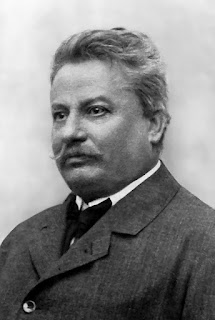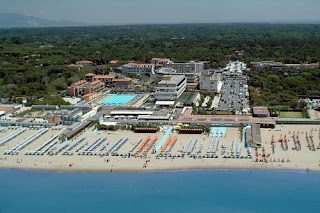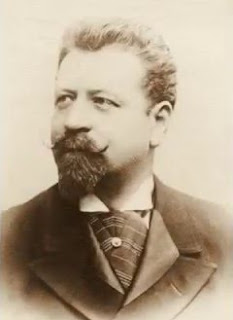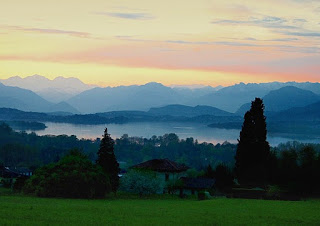Painful childhood inspired great verse
 |
| Giovanni Pascoli is considered to be one of Italy's greatest poets |
Pascoli’s poems in Latin won prizes and he was regarded by the writer Gabriele D’Annunzio as the finest Latin poet since the Augustan age, which lasted from approximately 43 BC to AD 18 and was thought to be the golden age of Latin literature.
Although Pascoli was the fourth of ten children, his family were comfortable financially and his father, Ruggero Pascoli, was administrator of an estate of farmland on which they lived.
But when Giovanni Pascoli was just 12 years old, his father, returning from Cesena in a carriage drawn by a black and white mare, was shot and killed by an assassin hiding in a ditch at the side of the road. The mare carried on slowly and brought home the body of her master, Ruggero, but the murderer was never brought to justice.
Giovanni Pascoli’s mother died the following year and five other children in the family had also died before he became an adult.
 |
| Giovanni Pascoli (right) as a child, pictured with his father and two brothers |
Pascoli composed an Ode to Passannante, but he tore it up soon after reading it during a Socialist gathering in Bologna.
He had been studying at the University of Bologna under the poet, Giosuè Carducci, but after his imprisonment he began a career in teaching, first in secondary schools and then in universities, as a professor of Greek, Latin and Italian literature.
In 1905 he was appointed to the Chair of Italian Literature at Bologna.
Pascoli’s first literary work, Myricae, was a collection of short, delicate lyrics inspired by nature and reflecting the psychological unrest of his student years.
His best work is considered to be Canti di Castelvecchio, a collection of moving songs about his sad childhood that also celebrated nature and family life.
 |
| The cover of Pascoli's book of lyric poetry, Myricae |
In his later years, Pascoli wrote nationalistic and historic poetry such as Poemi del Risorgimento, published in 1913. The way he focused on small things in his poetry and scaled back on the era’s grandiose language and rhetoric is thought to have contributed to the modernisation of Italian poetry.
His poems were translated and published in English in the 1920s and he also translated poems by Wordsworth, Shelley and Tennyson into Italian.
Pascoli died in 1912 at the age of 56 in Bologna.
An Italian literary award, the Pascoli Prize, was established in 1962 to commemorate the 50th anniversary of his death and his birthplace was renamed San Mauro Pascoli in 1932 in his honour.
 |
| San Mauro is also notable for the ruins of former Roman brick furnaces discovered during digging for a canal |
San Mauro Pascoli, renamed to honour the poet, is a town in what is now the province of Forlì-Cesena in the Emilia-Romagna region, about 100km (62 miles) southeast of Bologna and just 7.5km (4.7 miles) from the sea. The Italian shoe designer Giuseppe Zanotti was also born there. Pascoli's family home, in what is now Via Giovanni Pascoli, is open to the public as a museum. For more information visit www.casapascoli.it. The town is also notable for the remains of Roman brick furnaces discovered during the construction of the Romagnolo Emiliano Canal.
 |
| The Casa Pascoli at Castelvecchio was left to the hamlet of Barga in Giovanni's sister Maria's will |
Giovanni Pascoli’s house in the hamlet of Castelvecchio Pascoli is also now a museum dedicated to his life and work. After the poet’s death in 1912, his sister, Maria, took care of the house, faithfully preserving its structure and original furnishings. She left the house to the Municipality of Barga in her will and it has since been declared a national monument. In the chapel, which had been restored by Pascoli himself, Maria was laid to rest after her death in 1953, next to her brother.
More reading:
Giosue Carducci, the first Italian to win a Nobel Prize in Literature
Salvatore Quasimodo, the engineer whose poetry won a Nobel Prize
How Gabriele D'Annunzio combined writing with a military career
Also on this day:
The Festa di San Silvestro
1842: The birth of Belle Époque artist Giovanni Boldini
1990: The death of architect Giovanni Michelucci
Home










